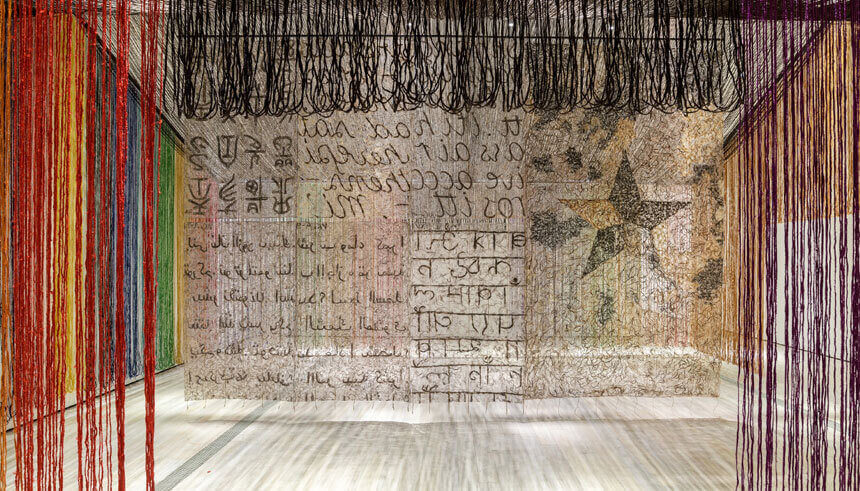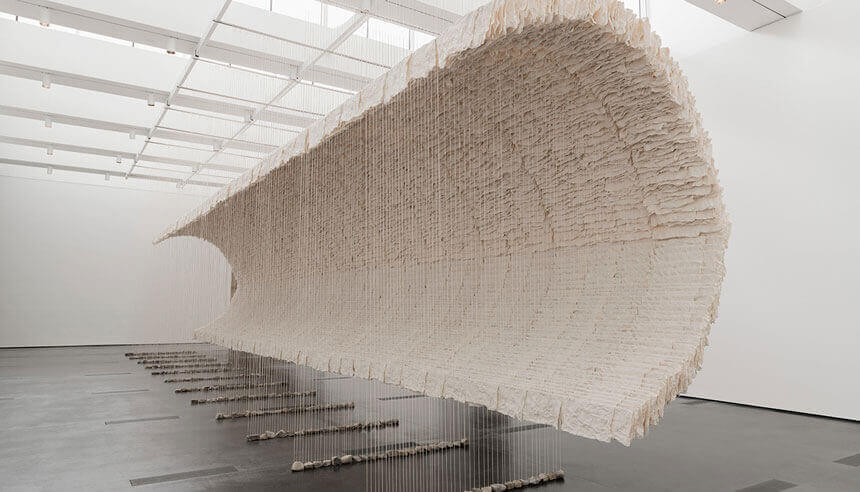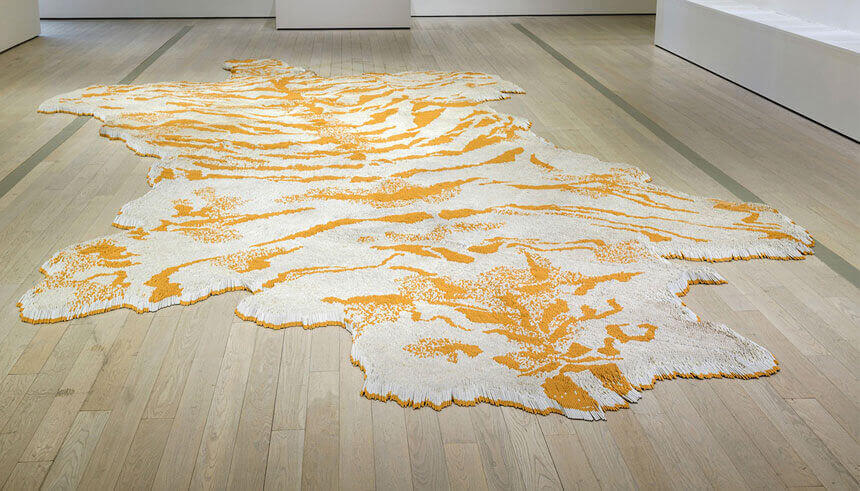East West Lifestyle
“The Allure of Matter”: Bringing Contemporary China to Los Angeles
By

“The Allure of Matter” is the first major show of contemporary Chinese art in Los Angeles.
The 1980s was a time of great change in China. In a turn away from the Communist ideology of the Cultural Revolution, Mao Zedong’s successor Deng Xiaoping had launched economic reforms and opened China up to foreign investment in 1978, spurring rapid economic growth in the country. It also opened up a world of thought—and materials—to a fleet of young students and artists who would become the faces of China’s contemporary art world.
“When the Cultural Revolution ended—which was around the time that a lot of these artists were in their early twenties or so—people had so much freedom to use traditional materials like ink, but also new materials that nobody else was using,” says Stephen Little, curator of Chinese art and the head of Chinese, Korean and South and Southeast Asian Departments at the Los Angeles County Museum of Art (LACMA). “A lot of artists really had this revolutionary energy within them and became very experimental with their artwork, and that carried over to the materials they used, as well.”
That experimentation with novel materials and materiality culminated in “The Allure of Matter: Material Art from China,” presented by East West Bank. The exhibit marks the first time that a major show of contemporary Chinese artwork came to Los Angeles. It features 34 works from 21 of the most influential Chinese artists working today, including Ai Weiwei and Cai Guo-Qiang. The exhibit explores the “intimate relationships” these artists have developed with their chosen mediums, which represent both snapshots of Chinese history and the artists’ personal stories. “The Allure of Matter” will be on display at LACMA until January 5, 2020, before traveling to the Smart Museum of Art in Chicago, the Seattle Art Museum and the Peabody Essex Museum in Salem, Massachusetts.

Using materials to tell histories and disrupt traditions
All of the artists featured in “The Allure of Matter” use materials in their artwork to convey meaning, which can be deeply rooted in personal and/or cultural histories.
“The material can either be a symbol itself, or it can be an object of memories that the artists have,” shares Susanna Ferrell, curatorial assistant of Chinese and Korean Art at LACMA. “It can also be used as a way of disrupting a history and a way of changing how a material has traditionally been used.”
Ferrell uses artists Lin Tianmiao and Zhu Jinshi as examples of the different ways the artists utilize materials to convey meaning. Lin Tianmiao’s piece “Day-Dreamer” draws on her childhood experience with her mother. Lin’s mother would bring home old white cotton gloves given from the state-owned factory she worked in and unravel them; it was Lin’s job to wind the threads into skeins so that they could be reused later. Drawing from that memory, Lin used white cotton threads to create “Day-Dreamer,” a dramatic floor-to-ceiling work. The threads connect two otherwise separate pieces: a wooden mattress wrapped in white cloth on the floor and a canvas of a female figure suspended from the ceiling. The threads contour around the figure, so that the woman’s body is mirrored on the mattress below.
Zhu Jinshi took a slightly different view of his relationship with his material. He chose to draw on Chinese history in the making of his piece, “Wave of Materials.” Another large-scale artwork, “Wave of Materials” uses 8,000 pieces of traditional xuan paper, which was most commonly used for classical Chinese calligraphy and ink painting, to create an abstract, delicately layered wave sculpture stretched on wires suspended from floor to ceiling.

“That kind of playing with the material, and literally bending it to a different function than it was designed for, is kind of a motif that runs through the exhibition,” says Little. “Different artists are doing different things with materials like that, which are very traditional. It’s an exhibition very much about the past and about the future. It opens up windows of possibility, in terms of where Chinese art is going. It’s a very unusual angle to look at material culture.”
Ferrell adds that it would be limiting to categorize the featured artworks as only expressions of Chinese identity or even Chinese culture. For instance, she says, Xu Bing’s multi-part “Tobacco Project,” which includes a piece called “1st Class” that is a tiger skin made entirely out of cigarettes, was inspired by American history. Xu’s project looks at the history of the Duke family, their involvement in the tobacco trade and the tobacco industry’s long-lasting effects on China.
“For some of these artists, there might be an active interest in looking at their own personal Chinese-ness, but that’s definitely not the defining trait of all the materials in the exhibition,” Ferrell points out.

Being at the forefront of Chinese contemporary art
“The Allure of Matter” is just the first step to LACMA’s desire to become a world leader in contemporary Chinese art. Last year, LACMA and Shanghai’s Yuz Museum announced they were merging, making LACMA the only American museum to have a platform in China. The merger also gives LACMA access to Yuz Museum founder Budi Tek’s collection of over 1,000 contemporary Chinese artworks, which LACMA will be able to exhibit in Los Angeles.
“We are making this commitment to be a leader not only in promoting contemporary Chinese art and culture, but also we are involved with teaching,” says Little. “We are very open to students. We have more universities in Southern California with Chinese art history programs at the graduate level than any other city in America.”

Ultimately, LACMA’s goal is to educate their audience in an area of art that likely not many people are familiar with. With “The Allure of Matter,” Ferrell and Little hope to expand people’s conceptions of Chinese art and Chinese culture by showcasing the richness and history embedded in it. LACMA has provided detailed descriptions of each artwork, providing background information about each artist and contextualizing the piece within the artist’s own experiences. They also have a “vigorous docent program,” says Little, and are planning a number of educational events for students and younger children.
“We’re really mindful of the different kinds of audiences—it’s not just one voice or one method,” Little adds. “We don’t assume a huge amount of knowledge about China, but we’re trying to be the architects of an experience that people can take away and that will resonate with them in the days and months after they see the show.”
Ferrell hopes that the exhibition and LACMA’s programming efforts will open their audience’s eyes to the complexity and singularity of Chinese contemporary artwork. “A lot of times people have a small view of what Chinese artwork is, mostly focusing on historical works,” she says. “But there is sometimes this misconception, either forgetting that China has a contemporary art presence, or relating Chinese contemporary art to Western art history. These artists are telling different stories, and I’m hoping that people coming into the exhibition and not knowing much about contemporary China will learn some of those stories.”
Subscribe to the Reach Further Newsletter
Get inspiring stories in your inbox every month.

